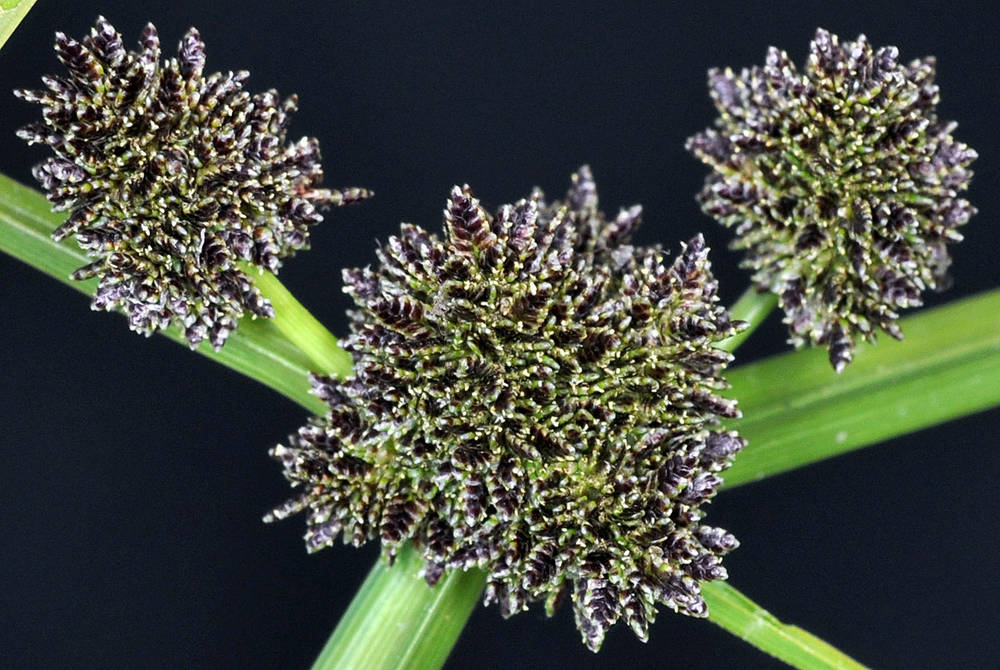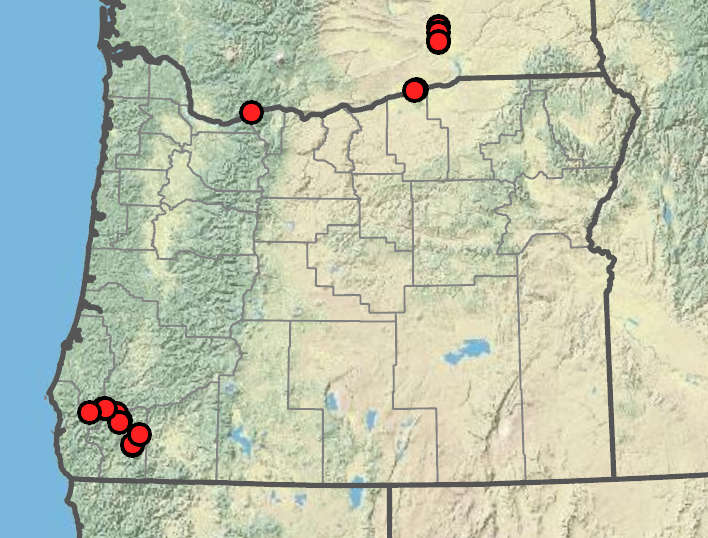Cyperus difformis
Cyperus niger
Asian flatsedge
black flatsedge
1–15, trigonous, 7–30 cm × 1.2–2.5 mm; soft (flattened in pressing).
5–40(95) cm.
(2)7–22 cm × 2.2–4 mm.
3–20(30) cm × 1.5– 3 mm.
clusters head-like; dense, 7–17(35) mm wide;
rays (0)1–5, 2–32 mm; longest inflorescence bract erect or nearly so, appearing as continuation of culm; other bracts horizontal to ascending.
clusters densely head-like; ovoid to hemispheric, 7–16(20) mm diameter;
rays (0)1–2, 0.3–4.5 cm;
inflorescence bracts 2–3; horizontal to reflexed downward.
30–120, oblong-ellipsoid, compressed; (2)3–5(6) × 0.8–1.2 mm; greenish brown to purplish brown; floral scales (6)12–20(30), obovate to orbiculate, 0.6–0.8 × 0.6–0.8 mm, stramineous to deep purple with clear margins; mid-stripe greenish, stramineous, or purplish;
lateral ribs 0; medial ribs 3;
apex mucronulate.
(3)5–25(60), linear to oblong-linear, compressed; (3)5–9 × 1.8–2.3 mm; floral scales 4–18, closely imbricate; ovate to orbiculate, 1.5–2.1 × 1.4–2.2 mm; chestnut brown; black, or brown, medially green or greenish brown, laterally ribless, medially 2(3)-ribbed, distinctly 2-keeled basally;
apex obtuse.
anthers 0.1 mm;
styles 0.1 mm;
stigmas 0.1–0.3 mm.
anthers 0.6–0.8 mm;
styles 0.4–0.6 mm;
stigmas 0.7–2.1 mm.
obovoid-ellipsoid, 0.6–0.8 × 0.3–0.4 mm (as long as subtending scale);
base cuneate.
ellipsoid, 1.2–1.4 × 0.6–0.8 mm, with network of ridges forming isodiametric or square cells.
Cyperus difformis
Cyperus niger
Disturbed, sandy or muddy soils, sand bars, roadsides, sometimes on serpentine. 100–400 m. Sisk. CA, ID; east to NJ, south to Mexico; South America; Africa, Australia, Eurasia, islands of the Pacific and Indian Oceans; Exotic.
Cyperus difformis is recognized by its tight heads of small spikes with unusually small scales. The first Oregon collection was made in 2004.
Swamps, ditches, wet meadows. 50–100 m. CR. CA; east to Oklahoma; South America. Exotic.
Cyperus niger is commonly collected without rhizomes and therefore confused with the similar but shorter C. bipartitus. Cyperus niger is variable, and as many as six varieties have been recognized, but the pattern of variation seems too complex to fit into simple taxonomic categories.
Barbara Wilson, Richard Brainerd, Nick Otting
Barbara Wilson, Richard Brainerd, Nick Otting




